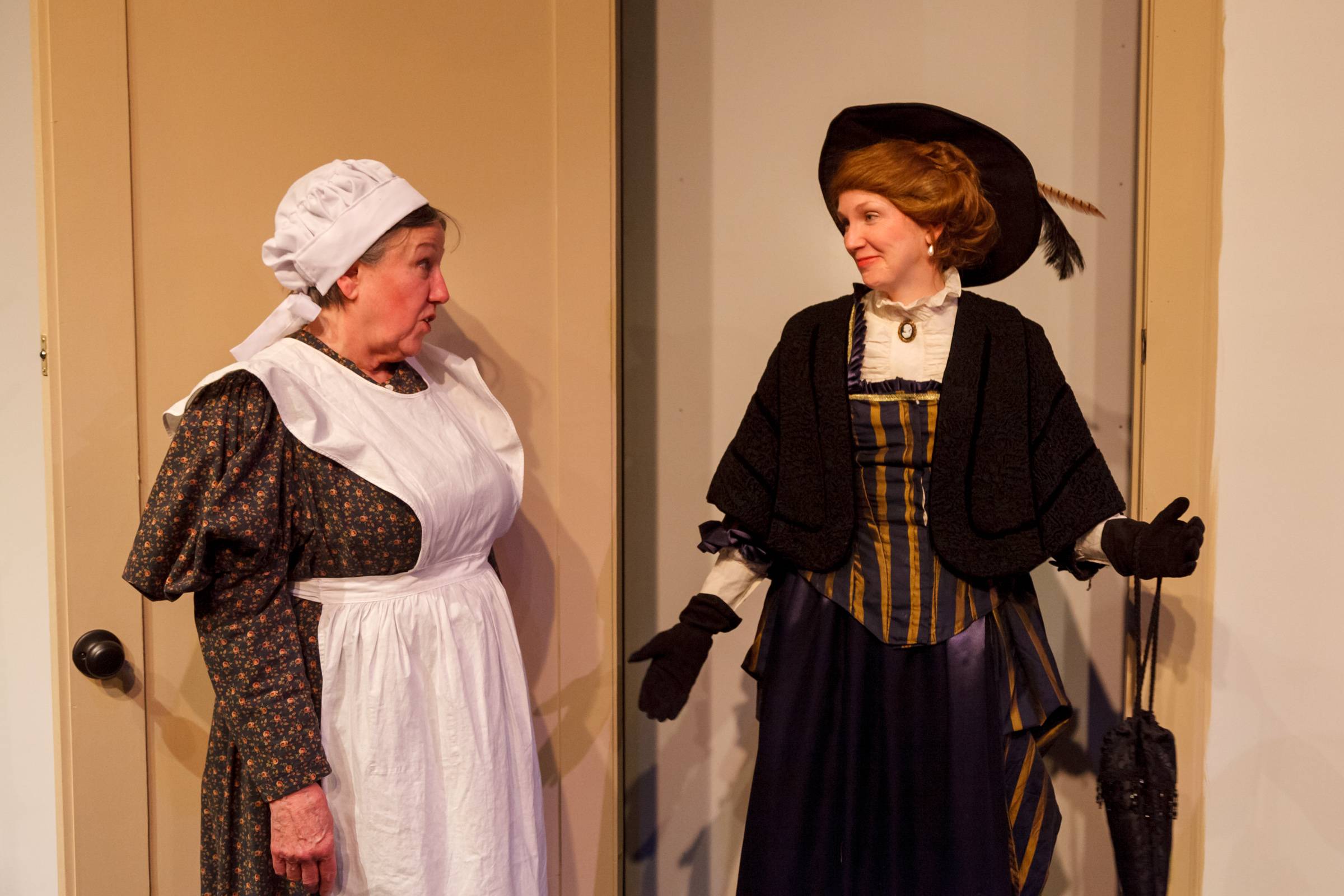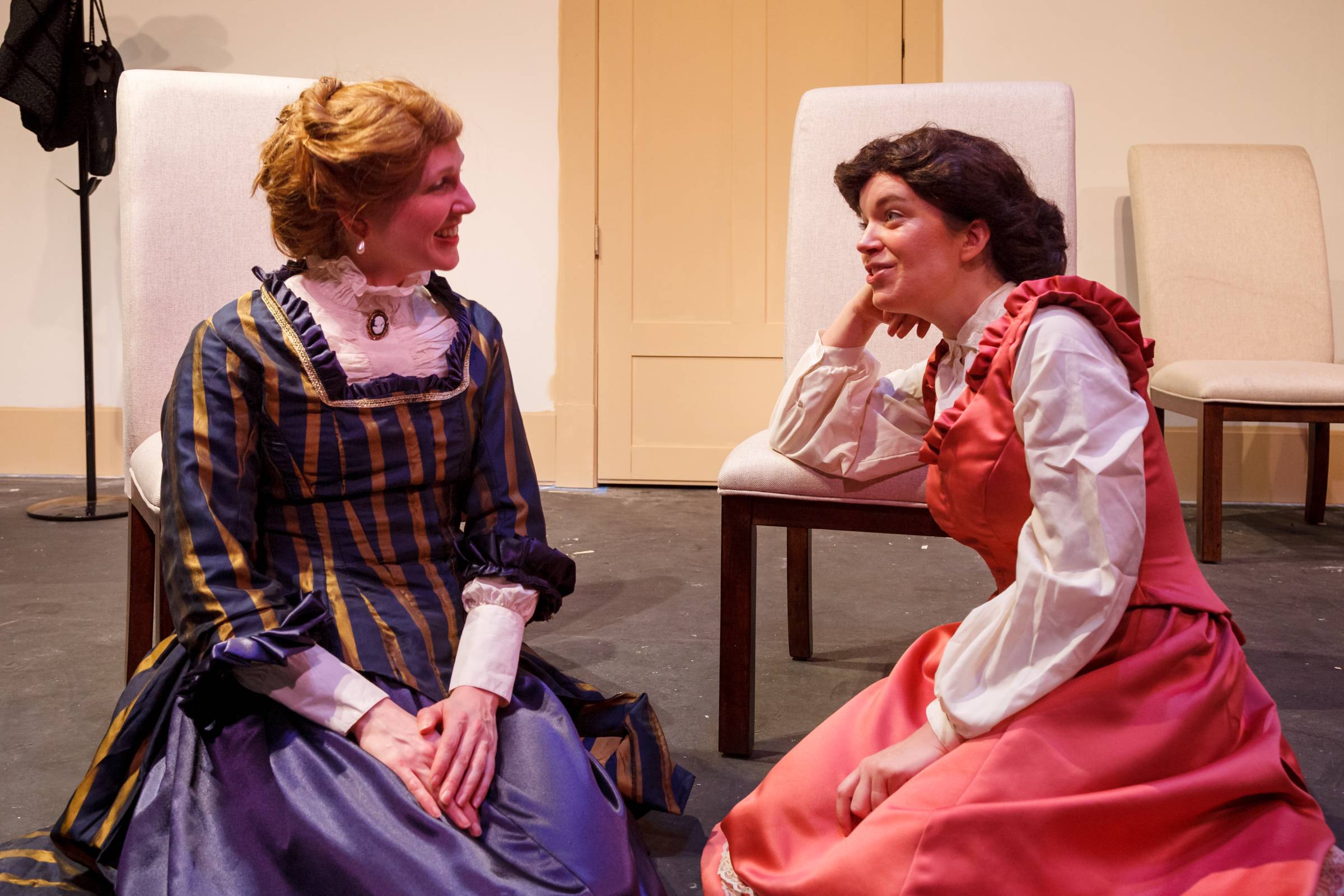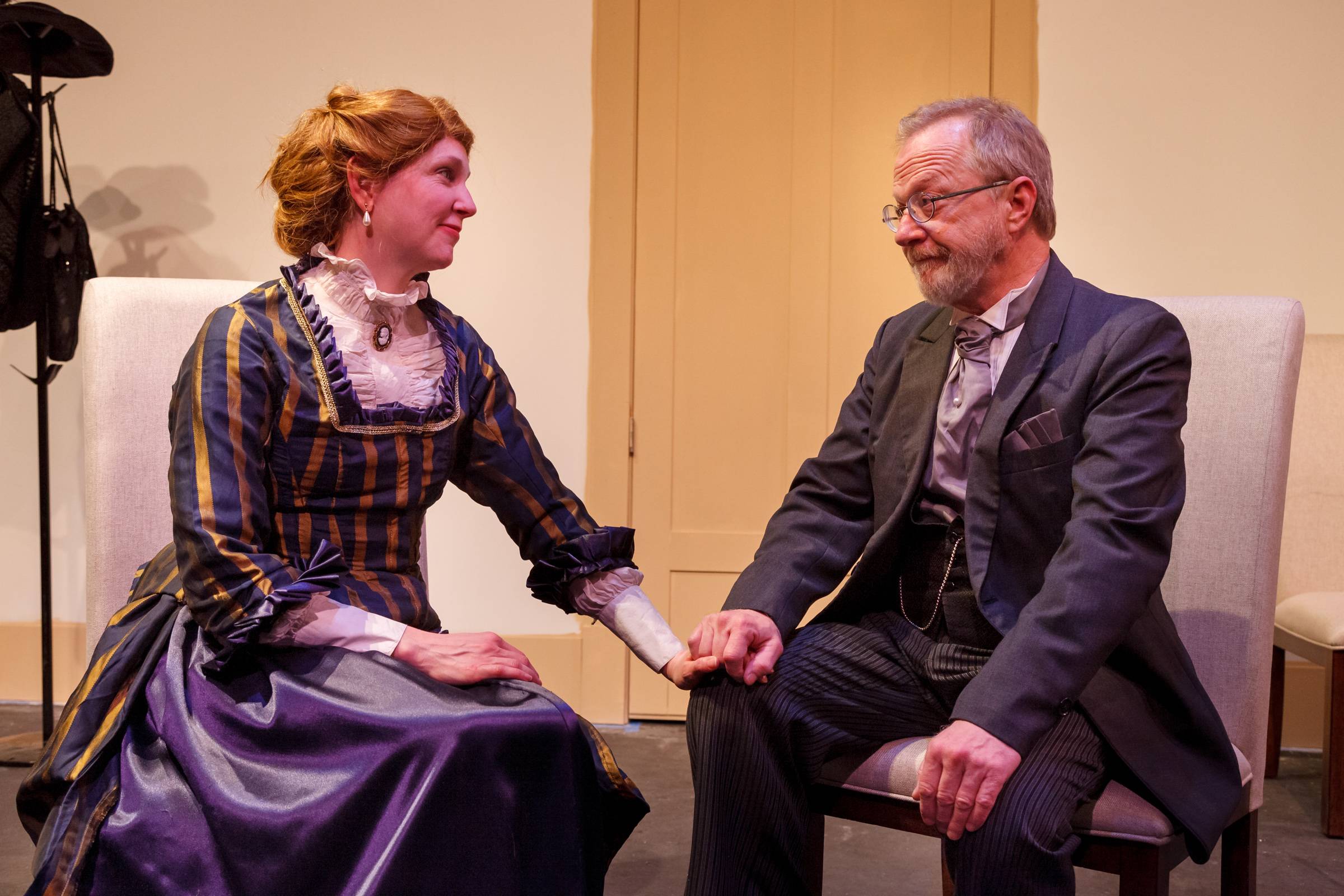Theatre is and has always been an ultimate form of fanfiction. After all, it was the Romans who took the Greeks’ theatrical stories and characters, revamped them, and presented more violent versions to death-and-glory-loving Roman audiences. And even later than that, Shakespeare himself borrowed his plots and structure from his great Roman poet predecessor (by 1,500 years), Seneca the Younger.
Here we are steadfast into the 21st century and our society has embraced fanfiction in all its forms, including theatre. At the Station Theatre last season, audiences were sent back in time to Georgian England where classic Pride and Prejudice characters came to life in a holiday-themed fanfiction entitled Miss Bennet: Christmas at Pemberley. Now playing at the Station, theatrical fanfiction A Doll’s House, Part 2 by Lucas Hnath reawakens and reignites Henrik Ibsen’s Victorian characters and repackages them with modern colloquialisms despite their period appearances.

The visual and auditory mismatch of a Victorian maid bitterly lashing out with the words “I’m pissed!” and “F*** you!” led for great humor during the 90-minute long, intermission-free opening performance of A Doll’s House, Part 2. With pointed direction by Rick Orr and Hnath’s snappy quips of dialogue, the play sailed.
Fifteen years have passed since the action of Henrik Ibsen’s 1879 play A Doll’s House and a successful and independent Nora returns home to finalize her divorce with husband Torvald who, unbeknownst to her until recently, never filed the papers. Now that Nora and others have discovered this legal revelation, her career and freedom are in jeopardy. Having carried on with her life believing she was a single woman, Nora’s marriage status has now implicated her to be a criminal; with her having signed legal documents and committed acts now deemed adulterous. In a cycle wherein Nora makes several attempts through various tactics to end her marriage, the story rotates between three major character interactions; Nora and her former maid Anne Marie, Nora and Torvald, and Nora and her now grown-up and resentful daughter, Emmy.
Through its lens of a classic theatrical drama, Part 2 discusses marriage and its power dynamics. Despite Nora’s repeated wish that people would be free from the institution of marriage in “20 or 30 years” (i.e. the early 1900s), marriage as an institution has continued to be redefined time and time again. Though as Part 2 highlights, no matter what the time period, society perpetuates, expects, and accepts male dominance in the heterosexual marriage.
“You wanted the divorce. I didn’t,” Torvald says to Nora upon her confronting him for never filing their divorce papers. Though Gary Ambler’s portrayal of Torvald makes one suspiciously sympathetic of Nora’s former flame, Torvald’s words insinuate how frail masculinity can exacerbate the lengths men go to to spitefully hold power over ‘the ones that got away.’ Torvald, instead of accepting his defeat, continues to abuse Nora even after she has left the home by keeping her legally bound to him.
When Torvald doesn’t budge, Nora (played with exuberant and youthful energy by Cara Maurizi) takes the advice of maid Anne Marie (played with effortless comedic timing by Barbara Ridenour), and sits down to make a plea for assistance from her daughter Emmy.
The scene between Maurizi and Lindsey Gates-Markel (as Emmy) displays their intimacy through a powerful distance, with a lovely picture of Nora and Emmy mirroring each other from afar as they first see each other. The distance between mother and child is prevalent in other ways throughout the scene, as Nora learns bits and pieces of her children’s lives through their conversation. Emmy tells Nora of intention to marry soon. This is unsettling to a liberated Nora who has now made a fortune off of her books lambasting marriage. Through Gates-Markel’s sly delivery and combative approach, one wonders if Emmy is truly marrying out of love or in spite of her mother’s departure.

Sheri Doyle’s elegant and period-appropriate costumes stand out among the design elements of of the Station’s 5th show of their 7-show season. Nora’s regal blue and gold pin-striped ensemble pops against the dark red wall of the Helmer household. It contrasts nicely with Emmy’s effeminate peach-pink dress, further highlighting the women’s dissimilarities. Torvald wears a smart black suit with simple gray accents. He doesn’t have the money he once had when he was married to Nora, and it is apparent through his dress. Ambler’s commendable portrayal of Torvald as rather gray and tired are amplified by his simple attire. Ann Marie’s brown floral frock and apron instantly defines her position within the household. Though, Ridenour’s fierce portrayal signal that despite her profession, she has power over Nora having raised her kids in her absence.
The set, designed by Jadon Peck, is static and features a decor-free living room with red walls, white trim, and a white door. Nora comments about the barren walls, to which Emmy explains that everything that was Nora’s was thrown out after she left.
The entire action of the play being contained to the single room suggests that Nora is not comfortable enough to explore what her former residence. It never did feel like her home after all. Director Rick Orr plays up this lack of ownership Nora has in the space by trapping her stage right. She rarely crosses the center stage line. And if she does, it’s not without purpose.
It did not bother me that the furniture was not Victorian, as the script and production purposefully blur the lines between the 19th and 21st centures. I did, however, find this blur of time to be confusing in some of the hand props used; a modern cardboard tissue box and a bottle of Voss water. I understand these were present to serve the actors (who rightfully deserve water and something to wipe their nose with), but I wish they had been disguised in some 19th century manner in order to keep up the aesthetic continuity.
The lighting design by Nick Shaw was very simplistic. The lack of windows in the home and light sources in the living room forced audiences to suspend their disbelief on where the room’s light was coming from. The most visually interesting lighting moment occurred at the beginning of the play, with the dramatic reveal of a well-lit Nora returning home.
The Station’s midwest non-professional premiere of A Doll’s House, Part 2 by Lucas Hnath and directed by Rick Orr is a fast-moving night of theatre with drama peppered with humor both light and dark. Like in any quality fanfiction, the characters in Part 2 are familiar and relatable, their narratives revamped with modern phrases and a 21st century perspective.

A Doll’s House, Part 2
The Celebration Company at the Station Theatre
223 N Broadway Ave, Urbana
February 21st to March 9th
All shows at 7:30 p.m. with the exception of a 3 p.m. matinee on March 3rd
Tickets: $15
Order tickets online here
Production photos by Jesse Folks
Marquee photo by Katie Burke








